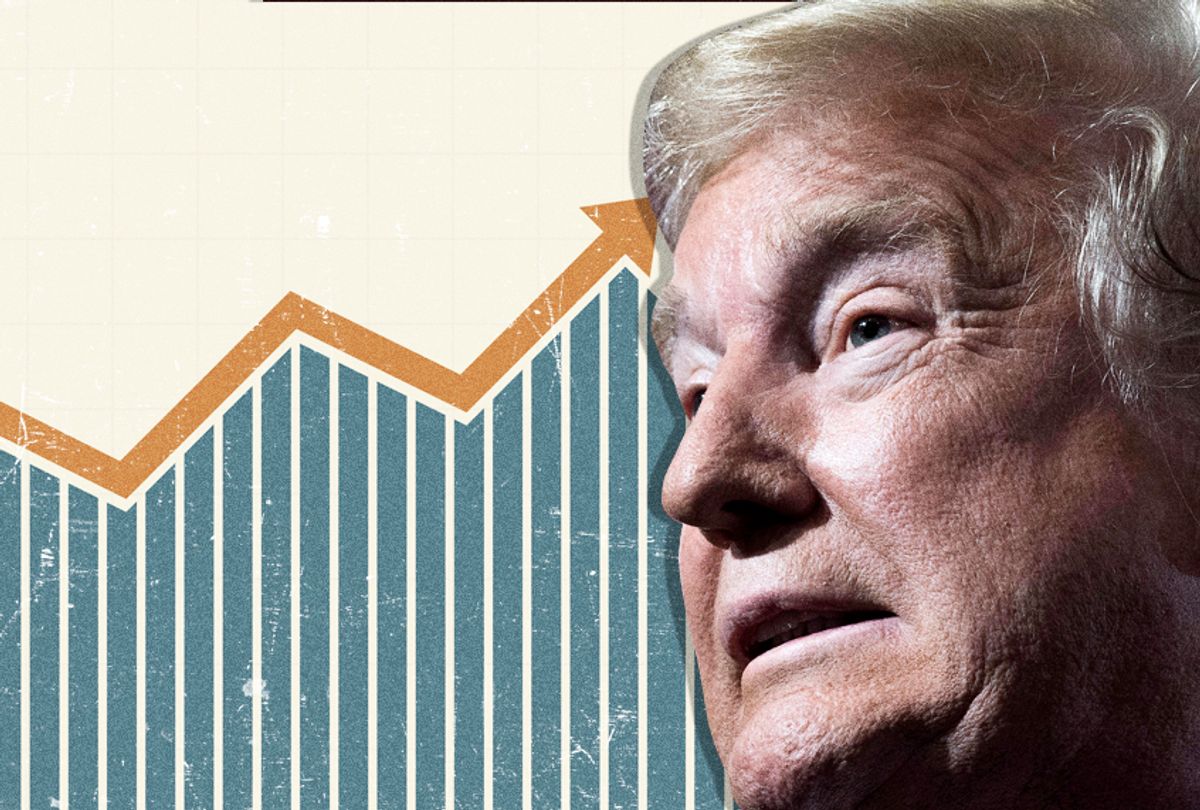President Donald Trump got a mixed bag Wednesday from the Federal Reserve.
On the one hand — economists always have two hands — it signaled clearly that it doesn’t plan on raising interest rates in the next quarter, or at all for 2019. Trump has repeatedly criticized the Fed in recent months for its decision a raise interests rates under the lead of his appointee, Chair Jerome Powell. The fact that it won’t be raising rates any in the foreseeable future should be welcomed by the president.
But on the other hand, the Fed’s decision to keep rates steady is driven by forecasts that are much more pessimistic than the White House’s view. While the White House expects growth at 3.2 percent in 2019 and at least 3 percent in 2020, the Fed actually cut its prediction of 2019 growth from 2.3 down to only 2.1 percent. It currently predicts an even more disappointing only 1.9 percent growth in 2020.
So even as the president and his administration try to cheer the success of his economic policies — most notably, the 2017 tax cut — the independent experts at the Fed, led by his hand-picked chair, disagree with their rosy predictions.
“And the Fed has marked its growth forecast down,” said economist Paul Krugman on Wednesday on Twitter. “Nobody but the Trumpies believes in the magic of their tax cut.”
The White House has been touting the strong growth of in 2018 as an effect of the president’s leadership, and there may be some truth in that. (Generally, though, presidents get way too much credit and/or blame for the economy.) Powell, in his speech Wednesday, noted that the year benefited from economic stimulus — which includes the effects of the giant tax cut and increases in spending — in addition to other “tailwinds.” But Republicans have traditionally dismissed the effects of stimulus, and their predictions about the benefits of the tax cut did not rely on the short-term injection of money into the economy, which will be a transitory anyway. Fundamentally, the Fed does not seem to believe there’s any reason to expect that new tax law will lift the U.S. economy in the way the GOP and the president promised.
And as FactCheck.org noted, the administration has been desperately trying to spin the 2018 economic indicators to make the president’s case. The White House has been claiming, for example, that the growth rate in 2018 was 3.2 percent, even when the Commerce Department’s Bureau of Economic Analysis says it was 2.9 percent.
“That’s a disappointing figure for Trump, as it is still well below the 4 to 6 percent growth he promised repeatedly, both when he was a candidate and also as president,” the website explained. “The 2018 figure is no better than the real GDP growth in 2015, which was Obama’s best year.”
It continued:
White House economists, however, focus on a different measure, one not normally used by economists in or out of government to gauge annual growth: BEA’s Table 1.1.11, which measures the change between the last quarter of the year compared to the same quarter a year earlier.
Voila! Now 2018 becomes a “banner year” with growth at “the fastest pace for any calendar year since 2005,” in the words of the White HouseCouncil of Economic Advisers. The White House website carries a headline banner saying “America’s economy achieves 3 percent growth for the first time in 13 years,” which isn’t as carefully worded, and is not correct.
So even when the economy is relatively strong, the White House feels compelled to lie about it and exaggerate economic growth. And when it comes to its predictions, the independent experts doubt Trump’s empty boasting. But not to worry — if Trump and his followers’ sky-high hopes fall short, they can always just lie some more.




Shares